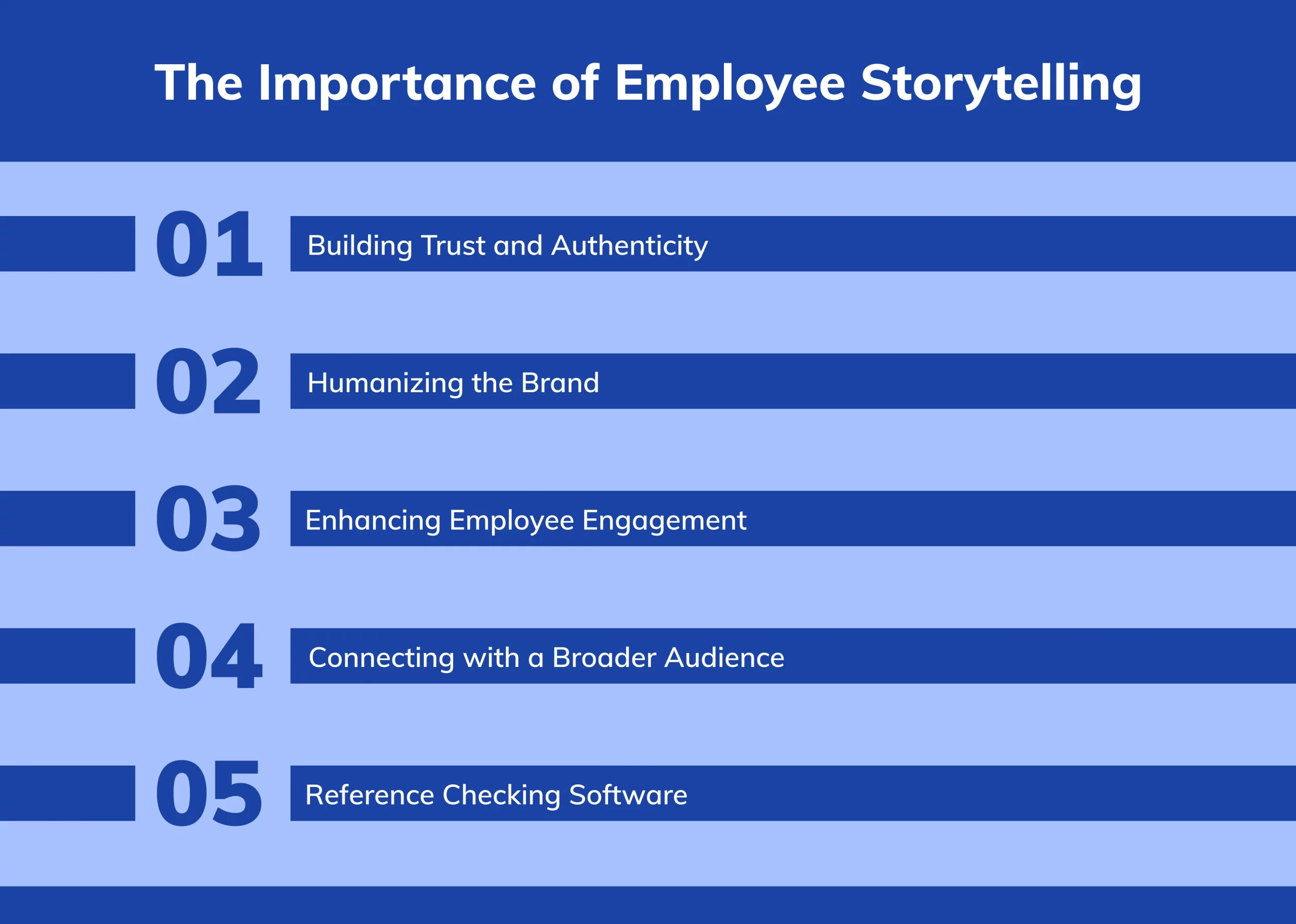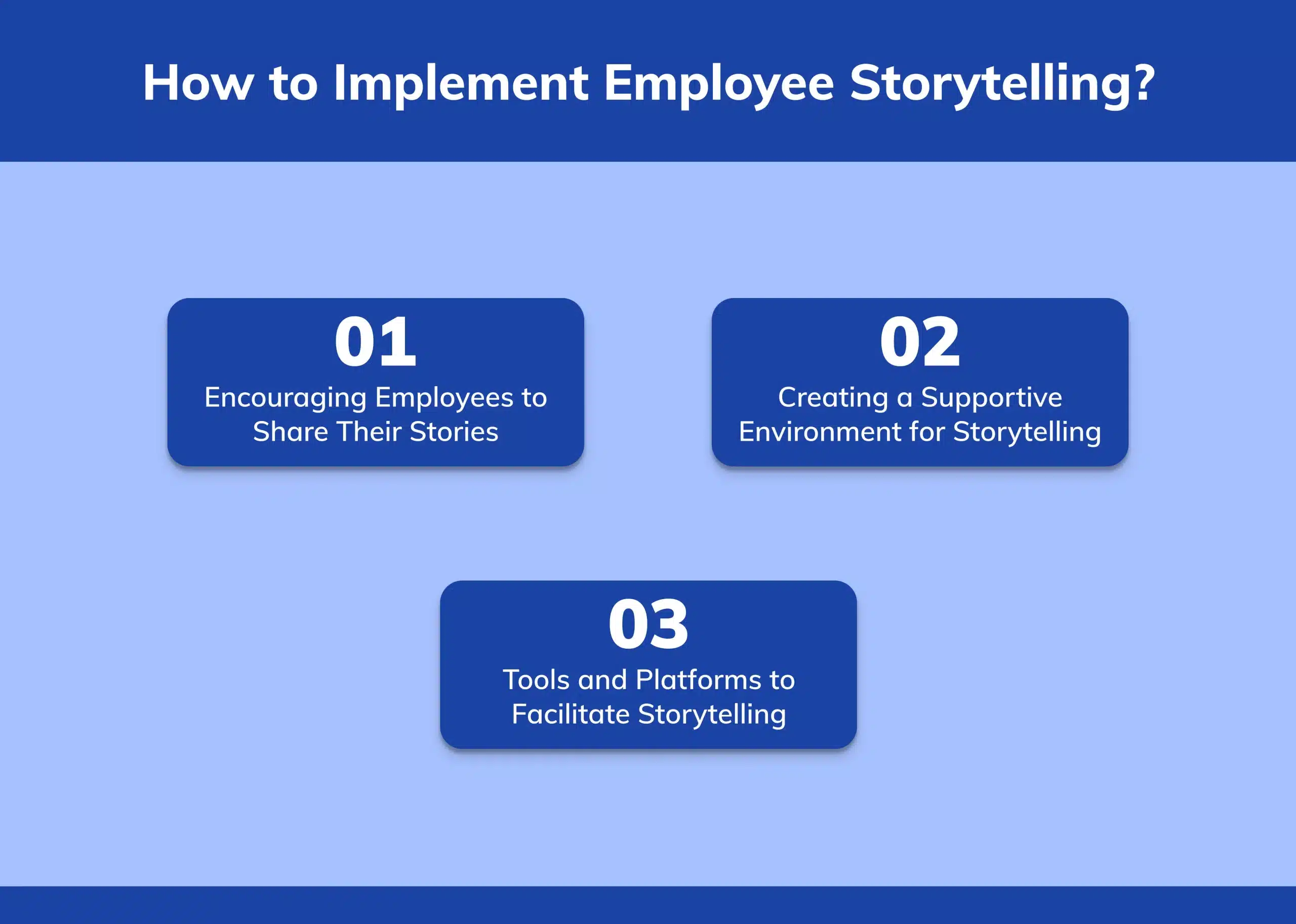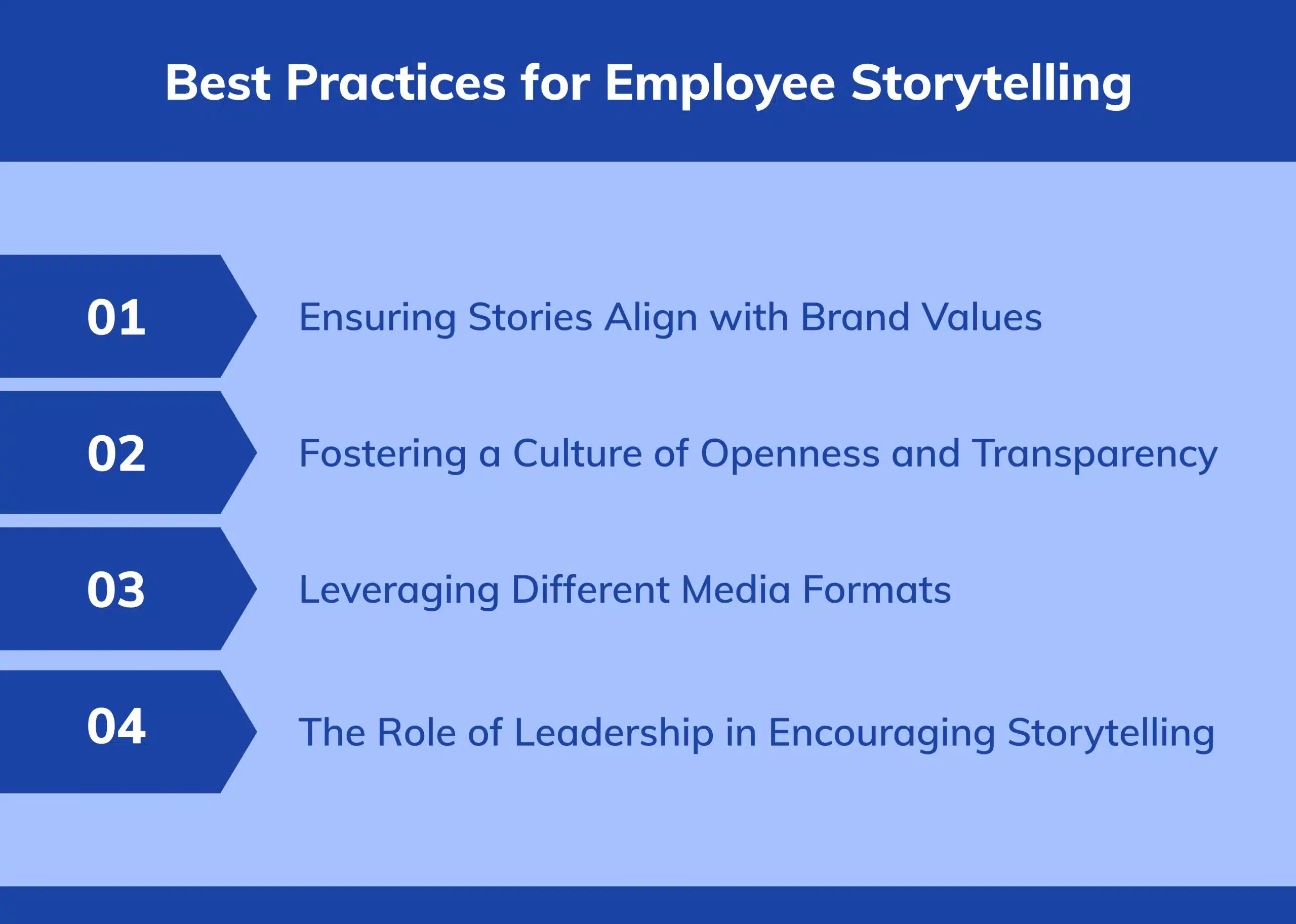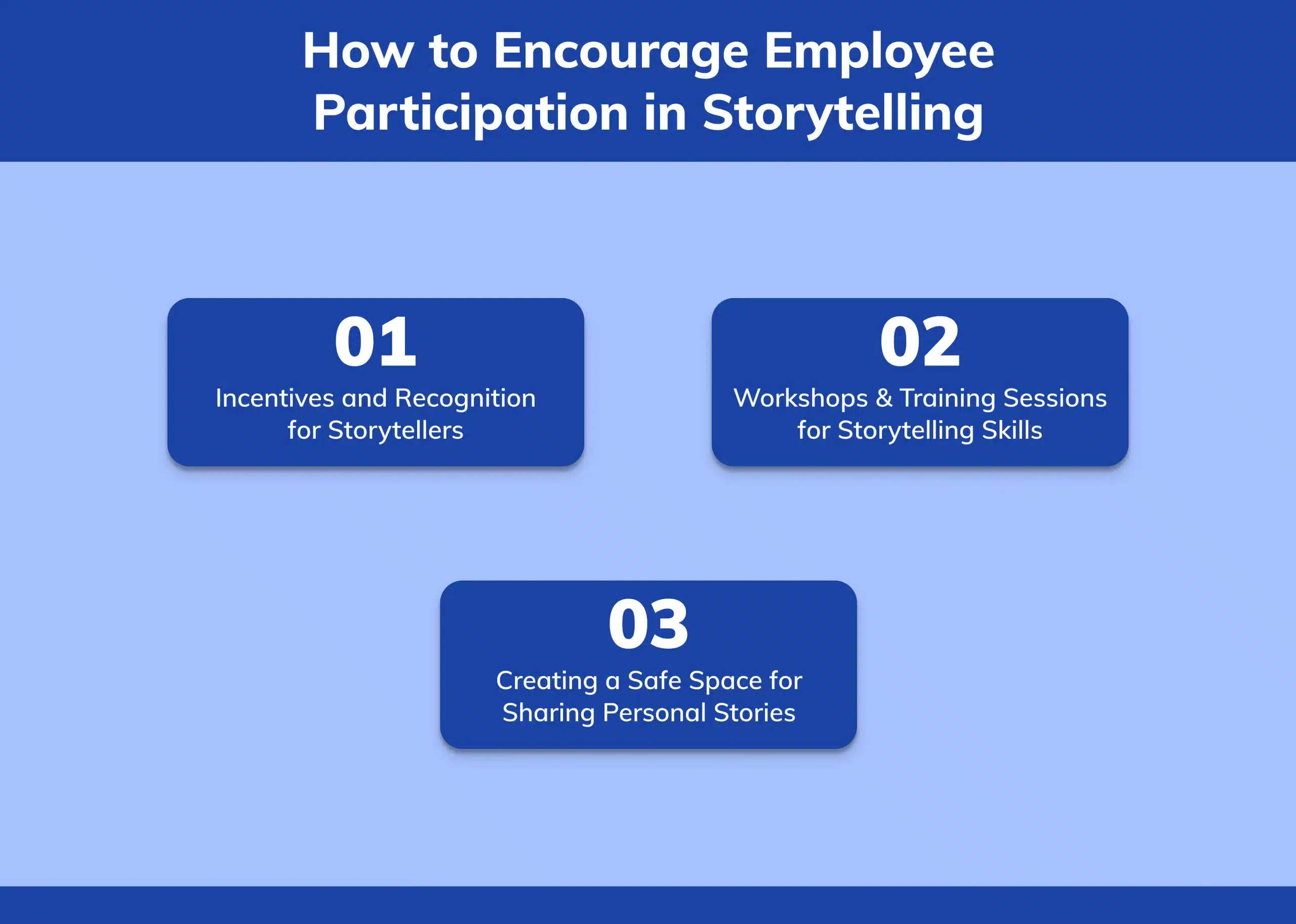Table of content
However, the key to successful employee storytelling lies in its authenticity—faking it can do more harm than good. This blog will explore employee storytelling, why it matters, and how to implement it effectively without losing its authenticity.
What is Employee Storytelling?
Employee storytelling is the practice of sharing employees’ personal and professional experiences to convey a company’s values, culture, and mission. These stories are not just about work; they often delve into employees’ journeys, showcasing their challenges, achievements, and growth within the organization.
Employees act as brand ambassadors, providing insights into the company from an insider’s perspective. Their stories offer a unique viewpoint that cannot be replicated through traditional marketing methods. By highlighting real-life experiences, employee storytelling helps paint an authentic picture of the company, which can resonate with internal and external audiences.
The Importance of Employee Storytelling
Employee storytelling is essential for several reasons, and its impact on a company can be profound:
Building Trust and Authenticity
Authentic employee stories foster trust among consumers and potential clients. People who hear genuine stories from honest employees are likelier to believe in the company’s values and products.
Humanizing the Brand
Brands often seem like faceless entities. Storytelling adds a human element, making the brand more relatable and approachable. It shows real people with real stories behind every product or service.
Enhancing Employee Engagement
Encouraging employees to share their stories can lead to higher employee engagement levels within the company. It gives employees a voice and allows them to contribute to the company’s narrative, which can boost morale and job satisfaction.
Connecting with a Broader Audience
Employee stories can reach and resonate with a wider audience, including potential employees, customers, and partners. These stories provide a more comprehensive view of the company, appealing to different audience segments.
Why Authenticity Matters in Employee Storytelling
Authenticity is the cornerstone of compelling employee storytelling. With it, the stories retain their power and can backfire, damaging the brand’s reputation. Here’s why authenticity is crucial:
The Risks of Inauthentic Storytelling
When storytelling is forced or fabricated, it often comes across as disingenuous. Audiences are quick to detect when a story doesn’t feel real, which can lead to mistrust. Inauthentic stories can undermine the brand’s credibility, causing more harm than good.
How Fake Stories Can Damage a Brand’s Reputation
Companies that engage in fake employee storytelling risk facing public backlash. For instance, if it’s discovered that an inspiring story was fabricated or exaggerated, the company could be seen as manipulative or dishonest. This not only tarnishes the brand’s image but also alienates customers, employees, and stakeholders.
Companies That Failed Due to Inauthentic Storytelling
Several cases have involved companies that faced significant fallout due to inauthentic employee storytelling. These examples serve as a cautionary tale, highlighting the importance of keeping employee stories genuine and truthful.
How to Implement Employee Storytelling?
Implementing employee storytelling effectively requires a strategic approach. Here’s how companies can encourage authentic stories from their employees:
Encouraging Employees to Share Their Stories:
The first step in implementing employee storytelling is to create an environment where employees feel comfortable sharing their experiences. This can be done by encouraging open communication and ensuring employees understand the value of their stories.
Creating a Supportive Environment for Storytelling
Companies should foster a culture that supports and values storytelling. This means providing the right platforms and opportunities for employees to share their stories, whether through internal newsletters, company blogs, or social media channels.
Tools and Platforms to Facilitate Storytelling
Utilizing the right tools and platforms is crucial for successful employee storytelling. These can include video platforms, blogging software, or even dedicated storytelling workshops. Providing employees with the needed resources will help them craft and share their stories more effectively.
Best Practices for Employee Storytelling
To ensure you employee’s story is impactful and authentic, companies should follow these best practices:
Ensuring Stories Align with Brand Values
While employee stories need to be personal and genuine, they should also align with the company’s values and mission. This alignment ensures that the stories contribute positively to the brand’s overall narrative.
Fostering a Culture of Openness and Transparency
A transparent and open culture is vital for authentic employee storytelling. Employees should feel safe and supported when sharing their stories without fear of repercussions.
Leveraging Different Media Formats
Employee storytelling should not be limited to written formats. Companies can leverage videos, podcasts, and even live storytelling events to bring these stories to life. Different media formats can cater to various audience preferences, making the stories more engaging and accessible.
The Role of Leadership in Encouraging Storytelling
Leadership is crucial in promoting employee storytelling. When leaders actively participate and share their stories, it sets a precedent and encourages other employees to follow suit. Leadership involvement can also help in shaping the storytelling culture within the company.
How to Measure the Success of Employee Storytelling?
Once employee storytelling is implemented, it’s essential to measure its effectiveness. Here are some ways to track and analyze the success of your efforts:
Key Metrics to Track
Monitoring certain metrics can help gauge the impact of employee storytelling. These metrics include engagement levels (likes, shares, comments), brand sentiment (positive or negative feedback), and reach (how widely the stories are shared).
Tools for Monitoring and Analyzing Storytelling Impact
Several tools can help measure the success of your employee’s stories. Social media analytics tools, content management systems, and employee feedback platforms can provide valuable insights into how well the stories resonate with the audience.
Adjusting Strategies Based on Feedback
Continuous improvement is key to successful storytelling. By analyzing feedback and performance metrics, companies can refine their storytelling strategies and make adjustments to ensure that the stories remain authentic, engaging, and aligned with the brand’s goals.
The Ethical Considerations in Employee Storytelling
While employee storytelling can be a powerful tool, it’s important to navigate it ethically. Here are some ethical considerations to keep in mind:
Protecting Employee Privacy and Consent
Consent is critical when sharing employee stories. Employees should have full control over what they share, and their privacy must always be respected. Companies should ensure that no one feels pressured to participate in storytelling.
Balancing Honesty with Brand Messaging
It’s essential to balance honest storytelling and maintaining the brand’s image. While authenticity is key, companies should consider how the stories fit within their messaging strategy. This balance ensures that the stories are true to the employee’s experience and supportive of the brand.
Navigating Sensitive Topics in Storytelling
Some employee stories may touch on sensitive or complex topics. Companies should approach these stories carefully, ensuring they are told respectfully and sensitively. It’s important to support employees who share such experiences and handle these stories in a way that honors their experiences.
How to Encourage Employee Participation in Storytelling
For employee storytelling to be successful, it’s important to actively encourage participation. Here’s how to do it:
Incentives and Recognition for Storytellers
Recognizing and rewarding employees who share their stories can be a great motivator. This recognition can come in the form of awards, bonuses, or simply public acknowledgement within the company.
Workshops and Training Sessions for Storytelling Skills
Not every employee may feel confident in their storytelling abilities. Offering workshops or training sessions can help employees develop the skills they need to tell their stories effectively. This support can empower more employees to participate in storytelling.
Creating a Safe Space for Sharing Personal Stories
Employees need to feel safe and supported when sharing their personal stories. Companies can create this environment by fostering a culture of respect and understanding, where employees know their stories will be heard and valued without judgment.
Conclusion
Employee storytelling is a powerful way to build trust, humanize the brand, and engage both employees and external audiences. However, the key to successful employee storytelling lies in its authenticity.
Companies must ensure their employee stories are genuine, respectful, and aligned with the brand’s values. By following the best practices outlined in this blog, companies can create a storytelling strategy that resonates with their audience and strengthens their brand.
Are you curious to know how Supersourcing can help? Contact us to learn more.
FAQs
What are the benefits of employee storytelling for small businesses?
Employee storytelling can help small businesses build a strong and authentic brand, connect with their audience on a deeper level, and foster a positive workplace culture.
How can companies ensure the authenticity of employee stories?
Companies can ensure authenticity by encouraging employees to share their genuine experiences without scripting or over-curating the stories. Providing a supportive environment and respecting employee privacy are also key.
What should be avoided when implementing employee storytelling?
It’s crucial to avoid inauthentic stories, over-curate, and ignore negative or challenging experiences. It’s also important to ensure that stories align with the brand’s values.
How do you measure the effectiveness of employee storytelling?
Effectiveness can be measured by tracking engagement levels, brand sentiment, and reach. Tools like social media analytics and employee feedback platforms can provide insights into the impact of the stories.
Can employee storytelling be integrated with other marketing strategies?
Yes, employee storytelling can be integrated with other marketing strategies, such as content marketing, social media campaigns, and employer branding efforts, to create a cohesive and impactful brand narrative.




